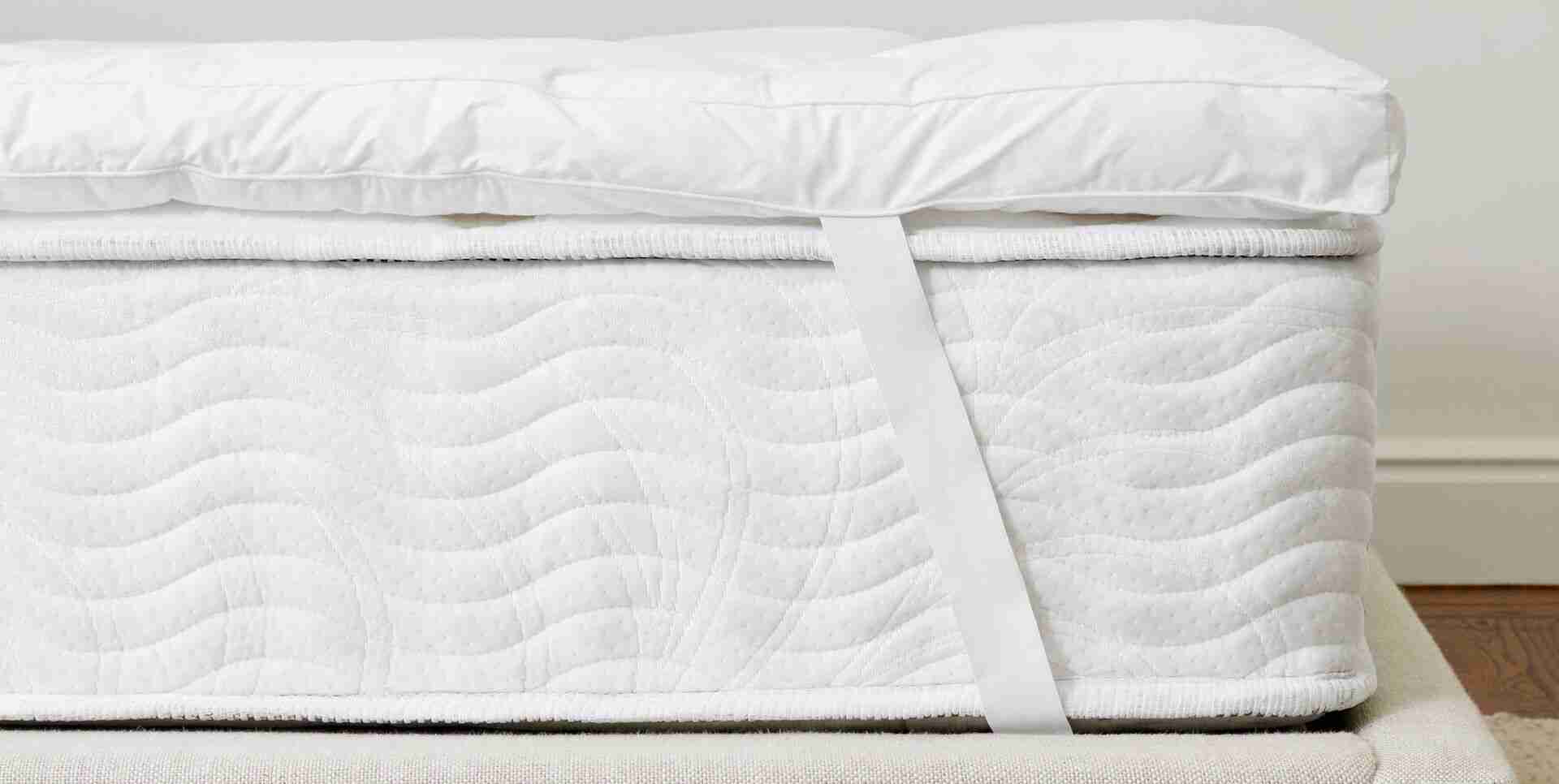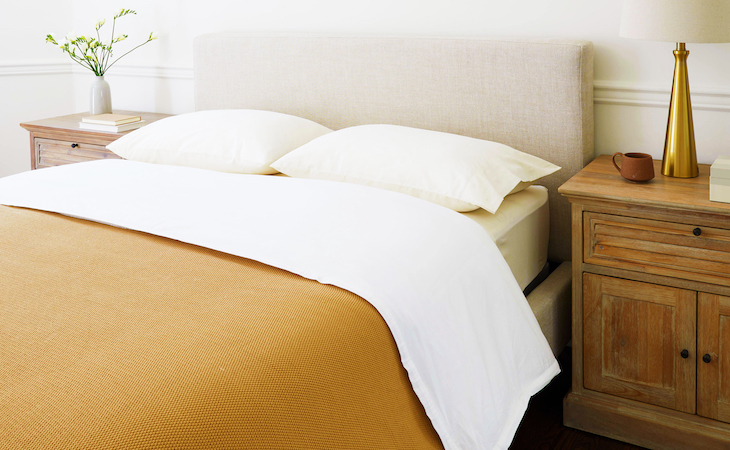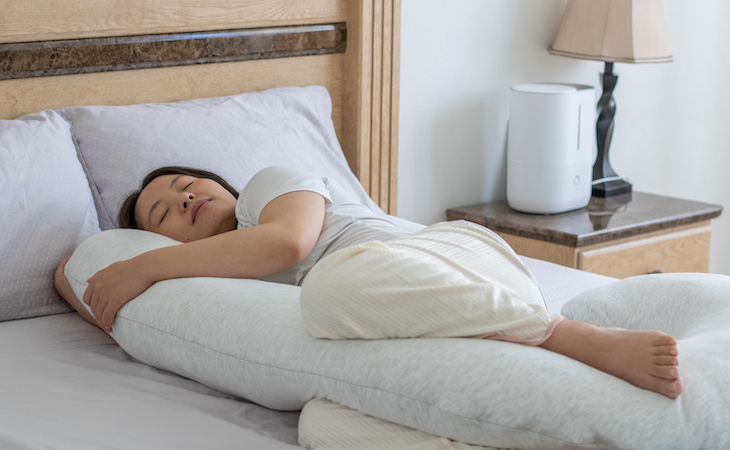Down pillows are known for being soft, fluffy, and malleable, making them an incredibly comfortable option for your sleep. However, down pillows aren’t for everyone.
If you have allergies to down—or you prefer to avoid using products made with materials derived from animals—then a down pillow won’t be suitable for you.
Enter the down alternative pillow. Made from synthetic fibers that mimic the properties of real down, down alternative pillows can be a great choice if you like the feel of down but are unable to sleep on that material.
This guide will explain everything you need to know about down alternative pillows to help you decide if one may be right for you.
What is a down alternative pillow?
Down alternative pillows are pillows filled with synthetic fibers that are designed to mimic the properties of down.
In order for the pillow to mimic the fluffiness of a down pillow, the fibers are produced to specific standards of thickness and spun in such a way as to stick together and create a mesh-like fill.
It’s important not to confuse down alternative pillows with the cheaper polyester-fill (polyfill) pillows.
A cheap polyfill pillow will typically be priced at $30 or below and will not be fluffy or malleable. A high-quality down alternative pillow, on the other hand, will likely cost $100 or more.
Down vs. down alternative: What’s the difference?
Although down alternative pillows are made to mimic the qualities of down, there are key differences between the two types of pillows.
Feel
Both down and alternative pillows have a soft and fluffy feel, but there are important differences. Some down alternative pillows are manufactured to closely resemble down, others less so.
Down pillows typically feel lightweight and airy (note that pillows filled with down and feathers typically feel a bit “crisper”). High-quality down alternative pillows feel more squishable and a bit more dense than a down pillow.
The fill moving around inside the pillow may feel like puffs of silk. In a down alternative pillow, the fill is also less likely to compress or concentrate in one area of the pillow.
Breathability
Down is known for its fantastic insulating properties (that’s the main reason many of us want our comforters and winter jackets to be filled with real down).
A high-quality down-alternative pillow is going to be less insulating and more breathable than a down pillow, so might be better for people who tend to sleep hot.
Durability
Down is a natural material—and natural materials tend to last longer than synthetic ones. A high-quality down-alternative pillow will usually last you two to three years, while a pillow made with real down can last five years and longer.
Price
Down pillows generally cost more than down alternative pillows. A down pillow will usually cost you anywhere from $70 to over $200. A down alternative pillow will typically cost from $60 to $150.
What are the benefits of using a down alternative pillow?
Down alternative pillows can provide all the benefits of down pillows at a much lower price point. Here are some of the reasons, in addition to the price difference, that someone might consider getting a down alternative pillow.
- Hypoallergenic. Down alternative pillows are hypoallergenic, so they’re a great option for people with allergies to down and animal dander. Most down alternative pillows are also mold-resistant and inhospitable to dust mites.
- Suit any sleeping position. Down alternative pillows are extremely versatile and are good for any sleeping position. They’re malleable and highly adjustable, so they’ll provide adequate support for side sleepers, back sleepers, and even stomach sleepers. Higher-loft pillows are more suitable for side and back sleepers or people who change positions a lot and can be shaped and scrunched into the shape that the sleeper needs. Low-loft down alternative pillows will suit stomach sleepers and won’t cause back and neck strain.
- Breathability. Unlike real down pillows, down alternative pillows won’t trap heat and provide excellent airflow, making them great for people who sleep hot and those living in hot climates.
- No animal-derived materials. Finally, down-alternative pillows are a fantastic option for those who crave the softness and plushiness of down but are opposed to using animal products for ethical reasons.
What are the drawbacks of using a down alternative pillow?
As with everything else, down-alternative pillows have their drawbacks that may or may not be a dealbreaker, depending on your circumstances and preferences.
- Not insulating enough. Since down alternative fibers lack the natural insulating properties of down, these pillows might not be the best option if you’re looking for something to keep you warm at night.
- Might not be fluffy enough. Although down alternative pillows have been designed to mimic real down, some people might find them too dense and not fluffy enough compared to real down.
- Eco-friendliness. When it comes to the eco-friendliness of down vs. down alternative pillows, it depends on how you look at it. On average, down pillows are more durable than down alternative pillows, so you don’t have to replace them as often. And because down is a natural material, it’s highly compostable, while synthetic down alternative isn’t. Down is also a by-product of the food industry that would otherwise be wasted if it wasn’t used as a fill for pillows, comforters, and winter jackets. So, down alternative pillows may not be as eco-friendly as down ones, depending on what type of fibers are used.
How much do down alternative pillows cost?
A down alternative pillow will cost you anywhere from $60 for a simpler version to $150 for more luxurious options.
Stay away from anything priced below $30 as those are most likely cheap pillows made with polyfill that don’t have any of the properties of high-quality down alternative pillows.
How do you care for a down alternative pillow?
Always check the manufacturer’s instructions before cleaning your down alternative pillow. Some down alternative pillows can be washed in the washing machine and some can even be put in the dryer on low heat.
If you put yours in the dryer, then throw a tennis ball in there to help redistribute the fill evenly as it dries. Some down alternative pillows are spot-clean or dry-clean only.
Where else can you find down alternative?
In addition to pillows, down alternative can also be found in
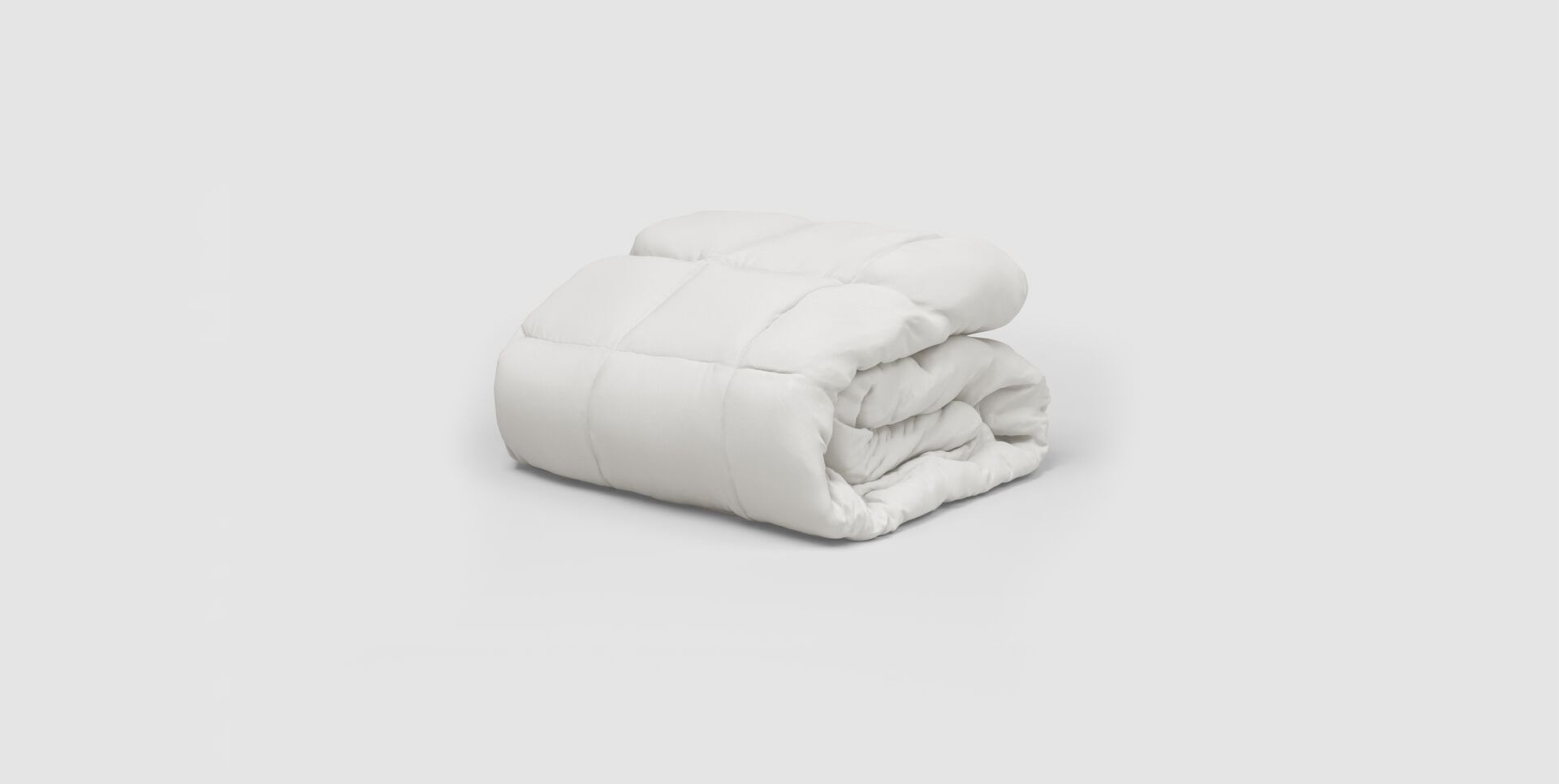
Plush and breathable all-season comforter/duvet insert
As with pillows, a high-quality down alternative comforter will give you all the benefits of down without its drawbacks.
In addition to being hypoallergenic, it will be extremely plush and airy and keep you warm and cozy in the winter without trapping heat.
FAQs
Are down alternative pillows as good as down pillows?
A high-quality down alternative pillow can be as good or better (depending on your preferences) than a down pillow. They’re soft and fluffy like down pillows but are hypoallergenic and more breathable.
Are down alternative pillows as soft as down pillows?
Down alternative pillows are designed to mimic the softness and plushiness of down. Yet, some down alternative pillows are a bit denser than pillows made with real down, which might be an issue for some people.
Are down alternative pillows good for side sleepers?
Down alternative pillows are extremely versatile and can benefit all sleeping positions. Side sleepers who need extra support to release pressure points in the area of their neck and shoulders will find that they can shape and scrunch their down alternative pillow to suit their needs.
Get the best down alternative pillow at Saatva
When you’re ready to upgrade your sleeping experience and choose the best down alternative pillow for you, check out our
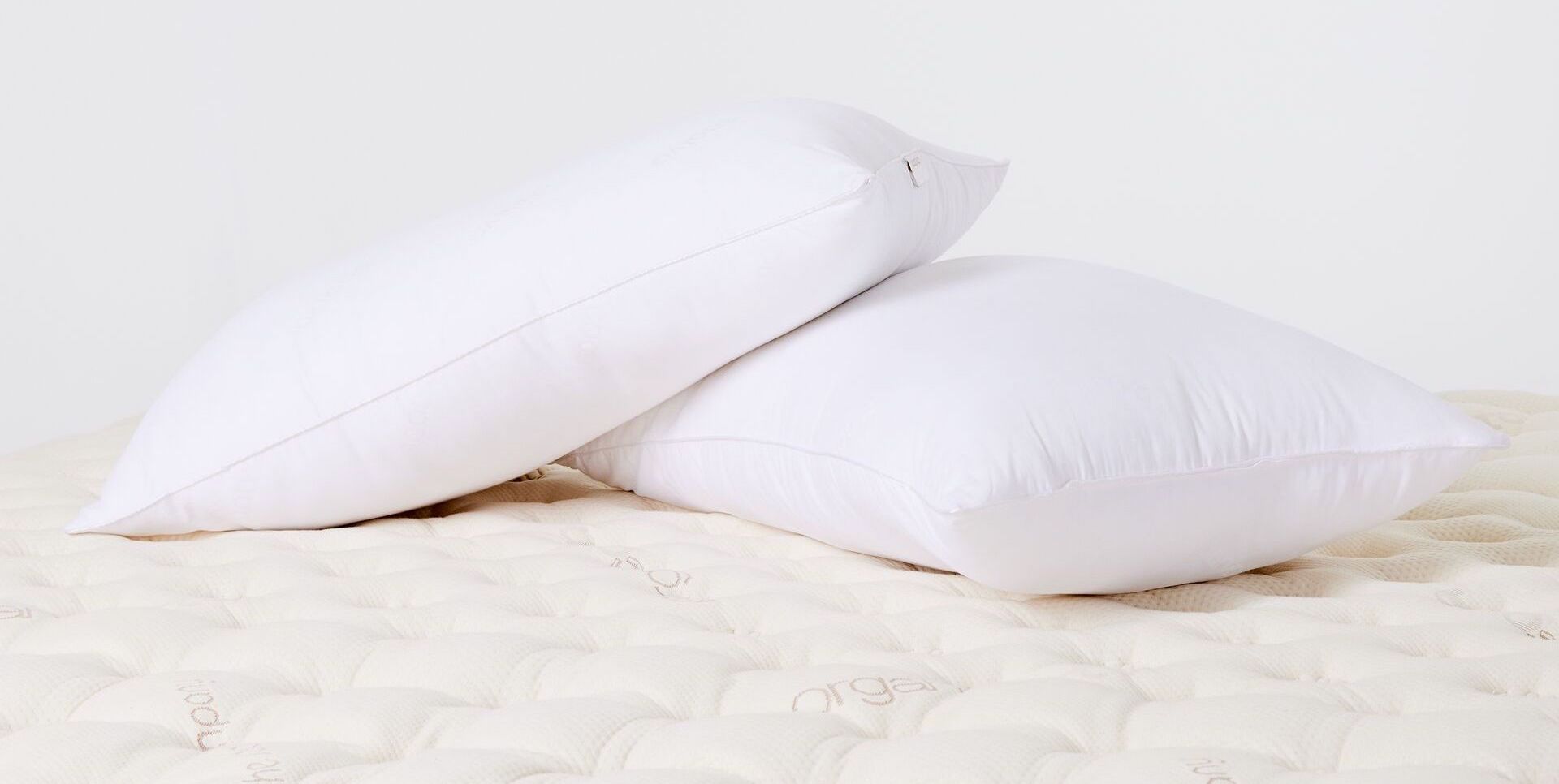
Hypoallergenic with a plush and airy feel that’s perfect for cuddling
It’s been designed to mimic the lofty feel of traditional down pillows with our custom down alternative fill that offers both supreme comfort and durability. The pillow is filled with a blend of lofty microdenier down alternative fibers that create micro air pockets for a plush, silky-soft feel and supportive memory fiber clusters.
The pillow is 100% hypoallergenic and comes with a breathable Fair Trade Certified™ cotton pillow cover for the most luxurious sleeping experience.


